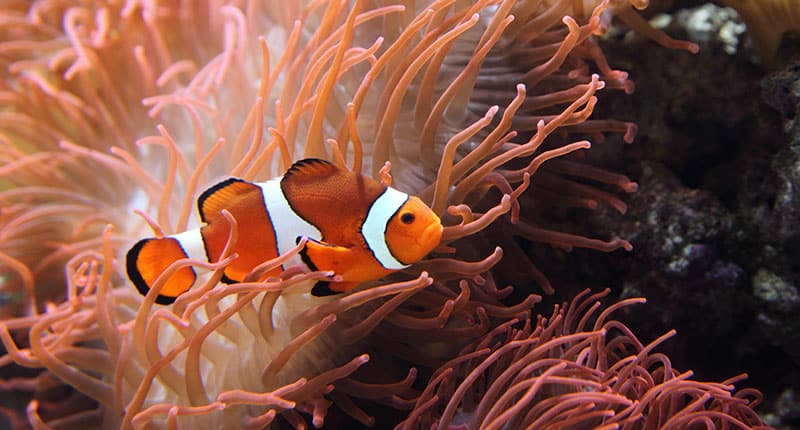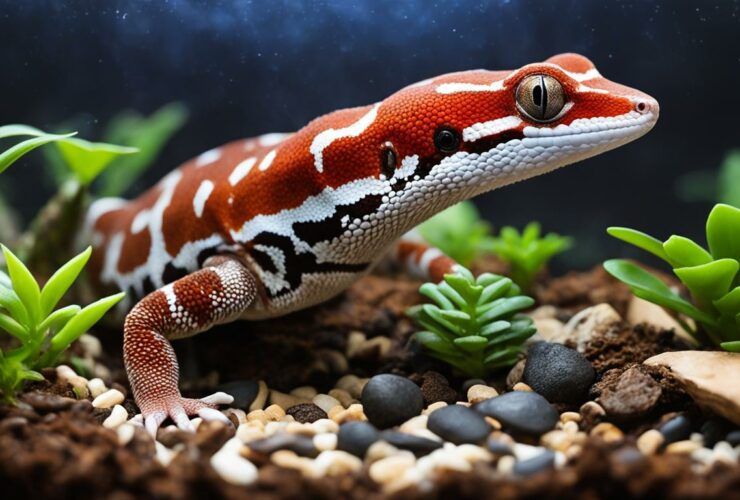When it comes to colorful marine life, few species can match the captivating charm of the Clown Anemonefish. Also known as Nemo, thanks to the beloved animated movie, these fish have garnered immense popularity among marine enthusiasts and casual observers alike. In this article, we will delve into the captivating world of Clown Anemonefish, exploring their unique characteristics, fascinating behaviors, and the symbiotic relationship they share with their host anemones.
What is a Clown Anemonefish?
The Clown Anemonefish, scientifically known as Amphiprioninae, is a subfamily of marine fish that belongs to the family Pomacentridae. These strikingly beautiful fish are native to the warm waters of the Indian and Pacific Oceans, specifically found in coral reefs and lagoons.
Appearance and Coloration
Clown Anemonefish are renowned for their vibrant and eye-catching color patterns. They typically have an orange or reddish body with three distinctive white bands outlined in black, stretching across their body. The bold coloration serves as a warning to potential predators that they are armed with a formidable defense mechanism.
Symbiotic Relationship with Anemones
One of the most intriguing aspects of Clown Anemonefish is their unique relationship with sea anemones. Despite the poisonous tentacles of anemones, these fish are immune to their sting. They have a special layer of mucus on their skin, providing protection and allowing them to seek refuge within the tentacles.
The Perfect Home
The Clown Anemonefish finds its perfect home among the tentacles of sea anemones. The fish help the anemone by providing food scraps and scaring away predators, while the anemone provides protection to the fish from predators with its venomous tentacles. This mutualistic relationship is an extraordinary example of cohabitation in the animal kingdom.
Social Structure
Clown Anemonefish live in small, hierarchical groups led by a dominant female. The group usually consists of a breeding pair and a few non-breeding males. If the female dies, the dominant male undergoes a sex change and takes her place, a fascinating phenomenon known as sequential hermaphroditism.
Breeding and Reproduction
Clown Anemonefish are sequential hermaphrodites, meaning they change their sex during their lifespan. The breeding pair lays eggs on a flat surface close to their host anemone and fiercely guards them. The male guards and aerates the eggs, ensuring their survival until they hatch.
Diet and Feeding Habits
Their diet mainly consists of small zooplankton, algae, and other tiny marine organisms. Clown Anemonefish are omnivores and opportunistic feeders, taking advantage of whatever food is available to them in their habitat.
Adaptations for Survival
To survive in their harsh marine environment, Clown Anemonefish have developed a few remarkable adaptations. They possess a specialized membrane that allows them to move easily among the venomous tentacles of their host anemones, without getting stung.
Threats and Conservation
Despite their popularity, Clown Anemonefish face several threats in the wild. Overfishing, habitat destruction, and climate change are some of the major concerns affecting their population. Conservation efforts are crucial to ensure the survival of these mesmerizing creatures for future generations to admire.
The Fascination Among Divers
Clown Anemonefish are a popular attraction for scuba divers and snorkelers. Their vibrant colors and amusing behaviors make them a favorite subject for underwater photography and observation.
Conservation Efforts
Numerous marine conservation organizations are actively involved in protecting Clown Anemonefish and their fragile coral reef habitats. Public awareness campaigns and responsible tourism play a vital role in preserving these fascinating marine creatures.
The Allure of Nemo
Thanks to movies like “Finding Nemo,” the Clown Anemonefish has become an icon in popular culture. Children and adults alike are enchanted by the story of Nemo and his adventures in the ocean.
Why We Should Protect Clown Anemonefish
The protection of Clown Anemonefish goes beyond their intrinsic beauty. As a keystone species in coral reefs, their presence influences the entire ecosystem. By safeguarding them, we ensure the health and biodiversity of the marine environment.
Responsible Marine Tourism
If you’re a diving enthusiast or a marine life lover, ensure your interactions with Clown Anemonefish and other marine creatures are responsible and sustainable. Avoid touching or damaging their habitats, and support eco-friendly tourism practices.
Conclusion
The Clown Anemonefish, with its vibrant colors and enchanting behaviors, truly lives up to its fascinating reputation. Their unique relationship with sea anemones, captivating social structure, and adaptability are aspects that continue to intrigue marine enthusiasts worldwide. However, it is essential to remember that we hold the responsibility of protecting these charismatic fish and their fragile marine ecosystems for generations to come.
FAQs
1. Are Clown Anemonefish dangerous to humans?
- Clown Anemonefish are not dangerous to humans. They are generally peaceful creatures and only become aggressive when their nest or offspring are threatened.
2. Can Clown Anemonefish survive without their host anemone?
- While Clown Anemonefish have a strong association with their host anemones, they can survive for short periods without them. However, their long-term survival is significantly improved when they have a symbiotic relationship with anemones.
3. How do Clown Anemonefish communicate with each other?
- Clown Anemonefish communicate using a series of clicks and pops. These sounds help them coordinate activities within their social group.
4. What is the average lifespan of a Clown Anemonefish?
- In the wild, Clown Anemonefish can live for 6 to 10 years on average. In captivity, their lifespan may extend to around 15 years under proper care.
5. Can Clown Anemonefish change their host anemone?
- While it is rare, Clown Anemonefish can change their host anemone if necessary. This typically happens when their current host is damaged or dies, forcing them to find a new suitable anemone to reside in.















